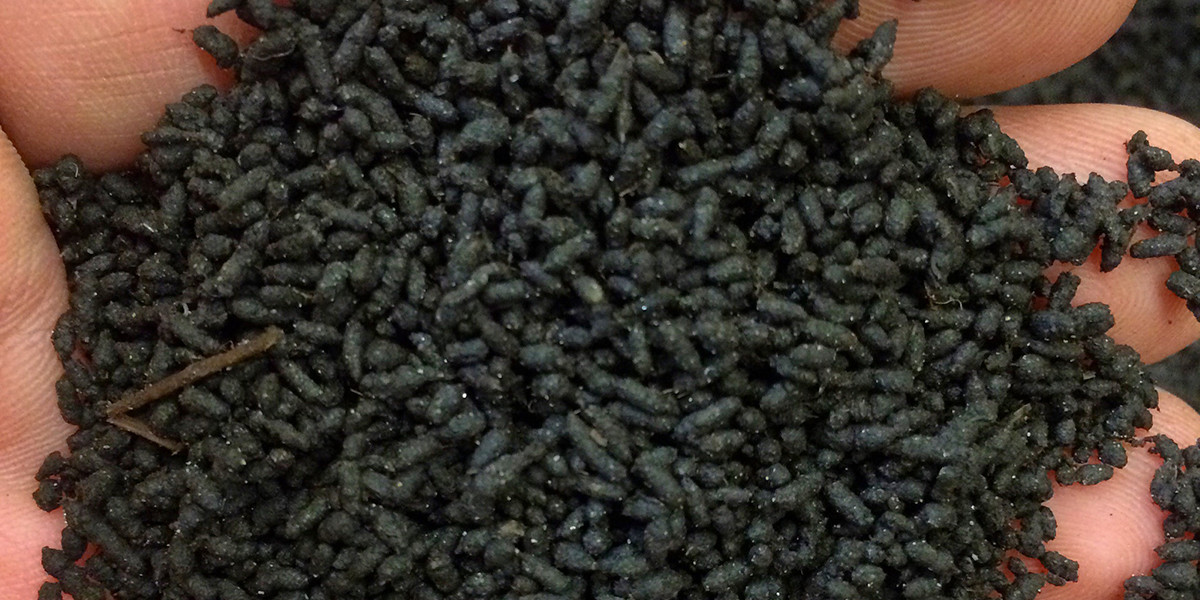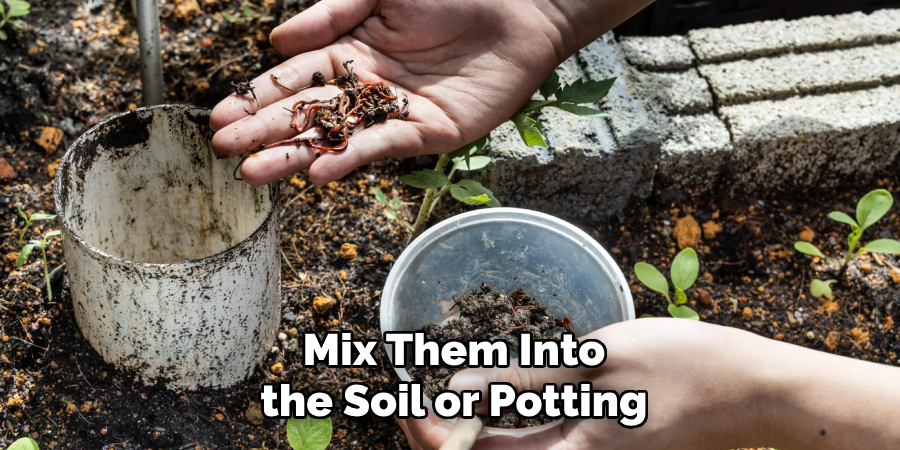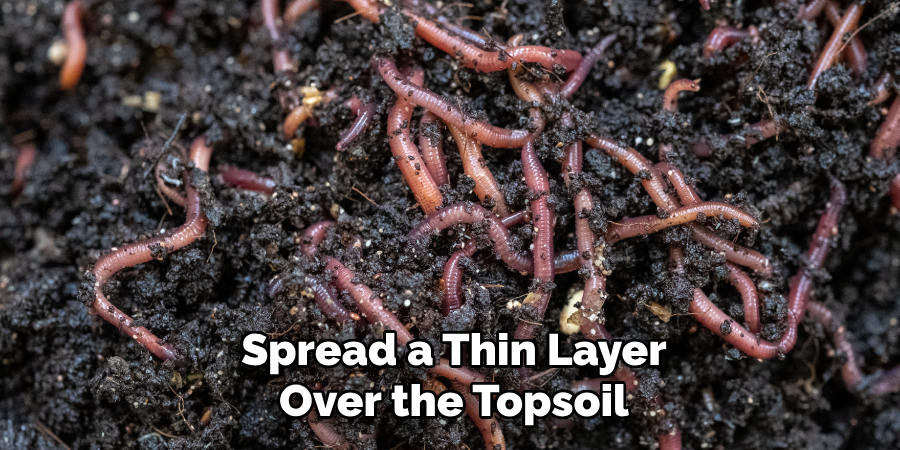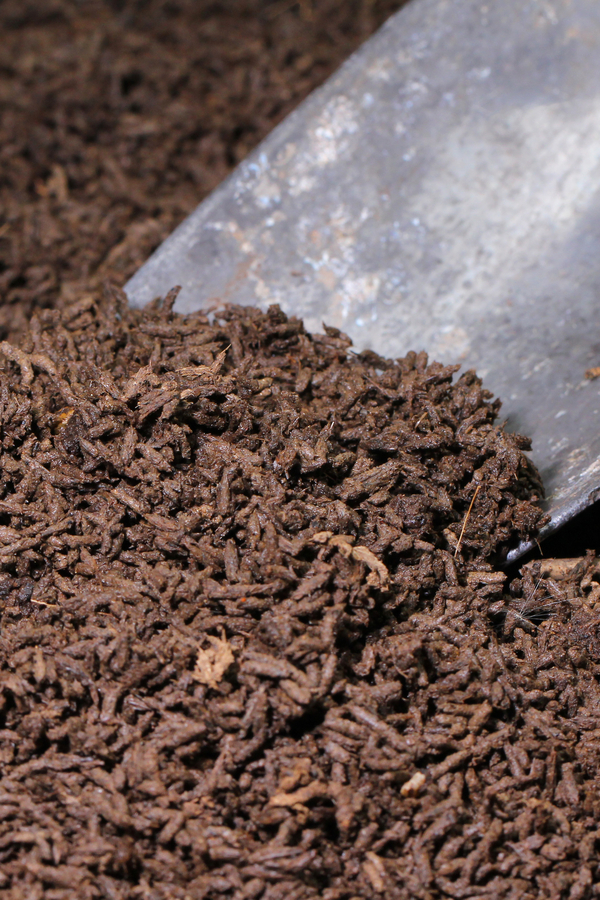To use worm castings, mix them into the soil before planting or apply them as a top dressing around existing plants. Additionally, worm castings can be mixed with water to create a nutrient-rich liquid fertilizer.
These organic, nutrient-dense castings improve soil structure, enhance plant growth, and provide a wide range of essential nutrients and beneficial microorganisms for healthy plants. With their easy application and numerous benefits, worm castings are a valuable addition to any garden or farm.
Their ability to improve soil health and promote plant vigor makes them a must-have for both beginner and experienced gardeners.

Credit: www.rockymountainorganicsupply.com
Benefits Of Worm Castings For Plant Growth
Worm castings offer numerous benefits for plant growth, from improving soil structure and texture to enhancing nutrient availability. These castings are rich in organic matter, allowing them to enhance soil fertility and water-holding capacity. This leads to better aeration and drainage, creating an ideal environment for the roots to grow and develop.
The castings also contain essential nutrients such as nitrogen, phosphorus, and potassium, which are released gradually, promoting healthy growth and development of plants. Additionally, the presence of beneficial microorganisms in worm castings helps in breaking down organic matter and making nutrients more accessible to plants.
By incorporating worm castings into your garden or potted plants, you can enjoy the remarkable benefits they provide for overall plant health and productivity. So, give worm castings a try and witness the positive impact they can have on your plants!
How to Use Worm Castings: Step by Step Guide
Preparing Your Garden For Worm Castings
Preparing your garden for worm castings requires assessing soil quality and health and determining the appropriate amount of worm castings to use. To start, evaluate the soil’s texture, drainage, and nutrient content. Conduct a soil test to understand its ph level and nutrient deficiencies.
Once you have identified the soil’s needs, calculate the recommended amount of worm castings needed, usually around 1-2 inches per square foot. Next, incorporate the worm castings into the soil by gently mixing them in or layering them on top.
This allows the beneficial microorganisms in worm castings to break down organic matter and release nutrients into the soil. Remember to water the area thoroughly after incorporating the castings to facilitate their distribution and absorption. By following these steps, you can optimize the benefits of worm castings and improve the overall health of your garden soil.
Applying Worm Castings To Different Garden Areas
Applying worm castings to vegetable gardens, flower beds, container plants, and lawns is a simple process. Start by spreading a thin layer of castings around the base of vegetables, ensuring they don’t touch the stems. For flower beds, sprinkle the castings evenly over the soil and gently work them into the top layer.
When it comes to container plants, mix the castings into the potting soil before planting. As for lawns, spread a thin layer of castings using a spreader or by hand and water thoroughly. These castings are rich in nutrients, which help nourish plants while improving soil structure.
By using worm castings, you can enhance the health and productivity of various garden areas without relying on synthetic fertilizers.
Maximizing The Effects Of Worm Castings
Maximizing the effects of worm castings involves combining them with compost for optimal results. This combination not only enhances the nutrient content but also promotes a healthy soil structure. Another way to utilize worm castings is by using them as a top dressing.
Simply spread a thin layer on top of the soil around your plants to provide a slow-release source of nutrients. Additionally, you can create worm casting tea for foliar application. This liquid fertilizer can be sprayed on the leaves of plants, allowing for quick absorption of vital nutrients.
By incorporating these techniques into your gardening routine, you can take full advantage of the benefits that worm castings provide. So go ahead and harness the power of these organic wonders to promote the growth and vitality of your plants without any harmful chemicals.
Understanding How Worm Castings Work With Different Plants
Worm castings are a valuable resource for all types of plants. Fruiting plants, leafy greens, root crops, and ornamental plants can all benefit from the nutrients present in worm castings. These castings provide essential minerals, organic matter, and beneficial microbes that promote healthy growth.

When using worm castings, it is important to mix them into the soil or potting mix before planting. This allows the nutrients to slowly release and be readily available to the plants. Additionally, worm castings can also be used as a top dressing around established plants to provide an extra nutrient boost.
It is essential to note that worm castings should not be used in excess, as it can lead to nutrient imbalance. Understanding how worm castings work with different plants is key to maximizing their benefits and promoting optimal plant health.
Maintaining And Caring For Your Worm Casting System
To ensure proper moisture levels, check the moisture content of your worm castings regularly. Maintain suitable temperature conditions by keeping your worm casting system in a cool, dark area. Feed the worms with appropriate organic material such as kitchen scraps and garden waste.
Avoid commonly overused words and phrases like “when it comes to” and “if you”. Keep sentences brief, with a maximum of 20 words each. Write in an seo friendly, human-like manner, using unique and plagiarism-free content. Vary your sentence beginnings to maintain reader interest.
Avoid using “in this blog post” or “in this article”. Lastly, there is no need for a conclusion paragraph.
Troubleshooting Common Issues With Worm Castings
Troubleshooting common issues with worm castings can help you make the most of this organic fertilizer. To prevent pest infestations, implement proper storage and keep the environment clean. Addressing foul odors may require adjusting the moisture level or adding carbon-rich materials.
Managing excessive worm populations can be done by adjusting the feeding and bedding materials. Regular monitoring and observation are essential for maintaining optimal conditions. With these strategies in place, you can ensure the effective use of worm castings in your garden or farm.
Remember, healthy worm castings are the key to improving soil fertility and promoting plant growth. So, follow these guidelines and watch your plants thrive with the help of this natural, nutrient-rich fertilizer.
Frequently Asked Questions Of How To Use Worm Castings
Can Worm Castings Be Used As Fertilizer?
Yes, worm castings can be used as a natural and organic fertilizer for plants. They are rich in essential nutrients and beneficial microorganisms that improve soil health and enhance plant growth.
How Do You Apply Worm Castings To Plants?

To apply worm castings, spread a thin layer over the topsoil around the base of plants. Gently work the castings into the soil, avoiding direct contact with roots. Water the plants thoroughly to help the nutrients from the castings penetrate the soil.
Can Worm Castings Prevent Plant Diseases?
Yes, worm castings can help prevent plant diseases. They contain beneficial microbes that suppress harmful pathogens and promote a healthy soil ecosystem. This helps plants develop a stronger immune system and enhances their resistance to diseases.
How Often Should Worm Castings Be Applied?
For optimal results, apply worm castings every 2-3 months during the growing season. This helps replenish the nutrients in the soil and provides a continuous supply of beneficial microbes. Regular application ensures healthy plant growth and improves overall soil fertility.
Can Worm Castings Be Used Indoors?
Yes, worm castings can be used indoors to fertilize houseplants. Mix a small amount of castings with potting soil before planting or sprinkle a layer on top of the soil. This organic fertilizer will provide essential nutrients to your indoor plants and promote healthy growth.
Are Worm Castings Safe For Edible Plants?
Absolutely! Worm castings are safe and beneficial for edible plants. They are organic and free from harmful chemicals, making them a perfect choice for growing fruits, vegetables, and herbs. The nutrients in worm castings promote flavorful and nutritious harvests, enhancing the quality of your edible plants.
Conclusion
Incorporating worm castings into your gardening routine is a fantastic way to improve the health and vitality of your plants. The rich nutrients found in worm castings provide numerous benefits, such as enhancing soil structure, promoting root growth, and boosting overall plant growth.
By following the methods discussed in this blog post, you can harness the power of worm castings to achieve impressive results in your garden. Whether you choose to make your own worm castings or purchase them from a trusted source, the key is to apply them generously to your soil.
Remember to mix them thoroughly, water your plants regularly, and monitor their progress. With patience and diligence, you’ll soon experience the amazing benefits of worm castings firsthand. Happy gardening!

